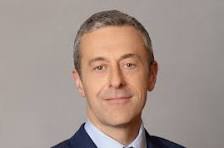
The proportion of private equity – including venture capital – in Australia’s sovereign wealth fund, The Future Fund, slipped 0.6% to 14.5% over the first six months of 2024.
Over the same period the allocation to alternatives (mainly hedge funds) slipped 0.3% to 15.2% while listed equities increased by 3.6% to 37.3%.
The allocation to credit increased 0.3% to 11%.
The annual return for the fund for the whole of the 2024 financial year was 9.1% which meant the fund has now returned 8.3% a year over the last 10 years against a mandate target of 6.9%.
Chief executive Dr Raphael Arndt said: “Equity markets rallied strongly over the year, thanks in part to the strength of the US economy and expectations that US interest rates had peaked and would soon begin to fall.
“Private credit and alternatives also delivered strong returns, as anticipated by our views that inflation and rates would remain higher and risk markets volatile,” he said.
“The changes in the investment environment and the resurgence of geopolitical risks, of which we have been warning for several years, continue to play out.”
Arndt said the portfolio was now more robust to geopolitical risk with relatively low exposure to fully priced equities, low exposure to interest rates and a range of inflation hedges in place.
Over the past four years, he said, the equivalent of the full value of the portfolio had been turned over to align it with the investment team’s revised thinking. This had included $50 billion of changes in the 2024 financial year alone.
“In this environment, I consider the annual return of 9.1% to be very strong,” he said.
“In a year where equities were the only strongly performing traditional asset class, many of our positions, and in particular our hedge fund portfolio, really delivered.”
In a call on the results, chief investment officer Ben Samild said the all-positive returns of the hedge funds had been very unusual as the substantial allocation was structured to stabilise the portfolio against volatility and in most years had generated modestly negative returns.
He said the slight reduction in private equity did not reflect any intentional move away from the asset class but simply reduced returns from a recent peak.
The fund still included substantial investments in private equity (including venture capital) and new investments would be made when opportunities occurred, considered in line with the fund’s total portfolio investment strategy. The fund had recently found significant opportunities in the credit sector both in public and private credit investments.
The realignment of the overall portfolio in response to increased geopolitical risk had resulted in increasing exposure to the Australian market across all asset classes. Absence of currency risk was also encouraging a focus on local investments.
Samild said the investment team recognised plenty of opportunities in the domestic market in which it already had around $12 billion invested. These included the capex requirements of some existing assets.
For the future, he anticipated an increasing focus on technology, especially artificial intelligence, and on renewable energy which would also help increase protection against inflation.
The 4 September release of the 2024 financial year results was the first under new Board of Guardians chair, Greg Combet.
Combet said he had been impressed by the level of investment of the fund in Australian infrastructure assets including “airports, a major port, renewable energy and telecommunications and data centres”.
“These are important investments in Australia’s future; building on these will be a priority for me, particularly given the investment opportunities in the energy transition,” he said.
“More broadly, the organisation has long recognised the importance of environmental, social and governance (ESG) issues. Further developing our ESG capabilities, in particular in relation to climate risks and opportunities, is also a focus for the board.”
Image: Future Fund chief investment officer Ben Samild.

